#STScl
Explore tagged Tumblr posts
Text
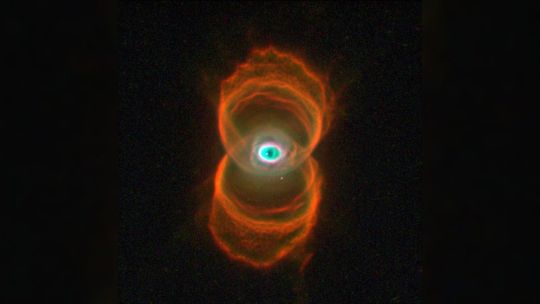
Hourglass Nebula
(Image credit: NASA/JPL-Caltech/ESA, the Hubble Heritage Team STScI/AURA)
#nasa/jpl-caltech/esa#hubble heritage team#stscl/aura#photographer#hourglass nebula#nebula#space#astronomy#nature
32 notes
·
View notes
Text
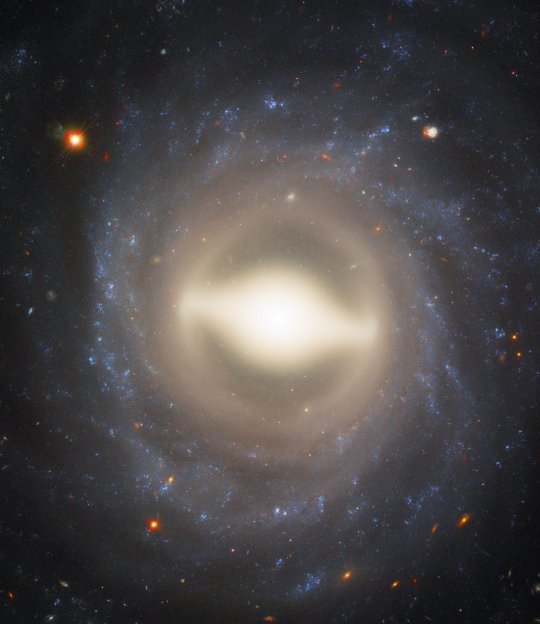
Galaxy NGC 1015, found nestled within the constellation of Cetus (The Whale) 118 million light-years from Earth.
Credit: ESA/Hubble & NASA, A. Riess (STScl/JHU).
#space#science#nature#astronomy#Universe#Cosmos#Astrophotography#NASA#night sky#stars#astro community#outer space#astrophysics#cosmology#galaxy#hubble space telescope
252 notes
·
View notes
Text

An ethereal image of Neptune, the most distant planet from the sun, taken by the James Webb Space Telescope. The image captured seven moons and the planet's thin rings, which are very difficult to photograph from Earth. In this cropped version of the image, released on Sept. 21, 2022, the moons Galatea, Naiad, and Thalassa are seen on the left side of the planet, and Despina, Proteus, Larissa are seen on the right side. Neptune's large and unusual moon, Triton, is out of frame. (NASA, ESA, CSA, STScl).
68 notes
·
View notes
Text
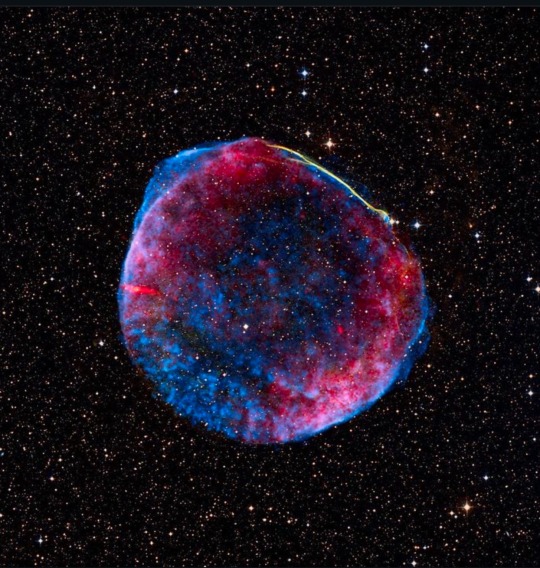
When supernova remnant SN 1006 first appeared in the sky in 1006 C.E., it was far brighter than Venus and visible during the daytime for weeks. From that moment on, it occupied the hearts of astronomers all over the world; it has been studied from the ground and from space many times.
In this image, visible, radio, and X-ray data combine to give us that blue (and red) view of the remnant's full shell - the debris field that was created when a white dwarf star exploded and sent material hurtling into space.
Scientists believe SN 1006 is a Type la supernova.
This class of supernova is caused when a white dwarf never lets another star go: either it pulls too much mass from a companion star and explodes, or it merges with another white dwarf and explodes.
Understanding Type la supernovas is especially important because astronomers use observations of these explosions in distant galaxies as mileposts to mark the expansion of the universe.
Image description: This supernova remnant looks like a bubble filled with blue and red clouds of dust and gas, floating amid a million stars. These stars are visible all around the bubble and even can be seen peeking through it.
Credit: NASA, ESA, and Z. Levay (STScl)
seasoflife
25 notes
·
View notes
Text
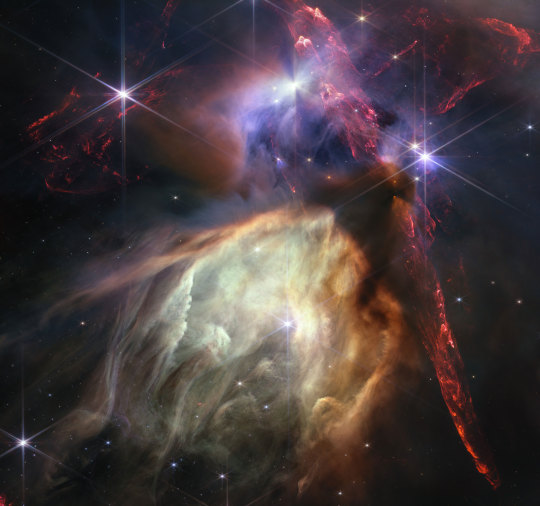
Stars are being born here! This is the Rho Ophiuchi cloud complex! A huge complex of dust and gas, full of atoms from previous dead stars, illuminated here by some of the huge stars born inside. It's about 460 light years from us! Photo by James Webb Space Telescope Credit - NASA/ESA/CSA/STScl
#nebula#nebulosa#stars#stelle#astronomy#space#new stars#James Webb Space Telescope#JWST#Rho Ophiuchi
56 notes
·
View notes
Text
0 notes
Text
February Planetary Alignment: Skywatchers Will Be Treated To A Celestial Event Friday
— Janet Loehrke | USA Today | February 25, 2025
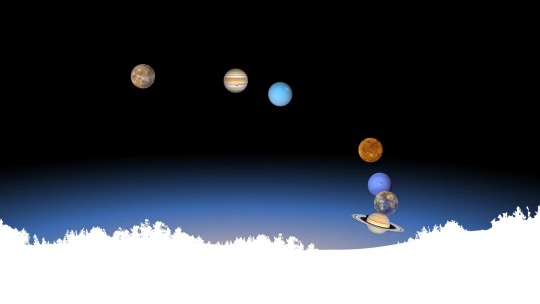
Skywatchers Can Look Forward to An Unusual Treat this week: A Celestial Alignment of Seven Planets. NASA/JPL/STScl/Photo Illustration By USA Today
Skywatchers will get a cosmic treat this week with a celestial gathering of planets.
A planetary alignment, or a "planet parade," according to the internet, will grace our night sky just after dusk, according to SkyatNightMagazine. You can expect to see seven planets align Friday when Mercury joins Mars, Jupiter, Uranus, Neptune, Venus and Saturn.
But not all of them will be easy to see, especially with the naked eye. You'll need a good pair of high-powered binoculars or a telescope to see Uranus and Neptune.
Where To View The Planetary Alignment
Regardless of how you're viewing them, the hardest planets to see will be Saturn and Neptune because they are close to the horizon and the sun, according to StarWalk. If you can see them, they'll be toward the west just after the sun sets. The time will vary based on your location. Mercury also should be visible in the western part of the sky just after sunset.
You'll have the best chance of viewing the alignment if you can find a location free of light pollution and a view of the horizon free of obstructions like trees or tall buildings.
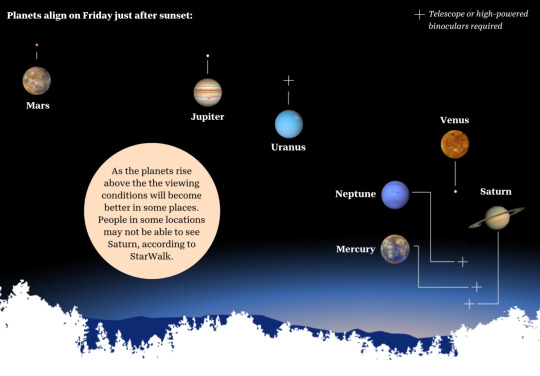
SOURCE: StarWalk.Space; GRAPHIC Janet Loehrke/USA Today
Is A Planetary Alignment Unusual?
It's not especially remarkable for a few planets to line up in the sky, but when we see four or five brilliant planets at once, it's less common, according to NASA.
The planets orbit the sun continuously in the solar system, so at times, they slowly catch up to one another. Because they travel along the same path, or ecliptic, as they pass Earth, it appears they are aligned. The alignment formation, however, is short-lived because planets move at different speeds.
Profiles Of The Planets
With eight planets in our solar system, which includes Earth, they all have some very interesting traits. Here's a quick look at the planets aligning this month:
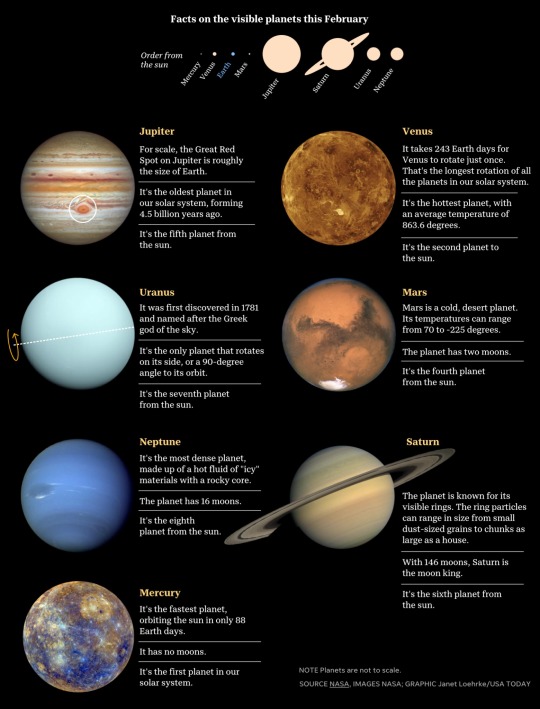
When Will The Planets Align Again?
According to Starwalk, skywatchers can look forward to more planetary alignments in 2025-2026:
April 17 (Four Planets): Neptune, Mercury, Saturn and Venus.
August 10 (Six Planets): Mercury, Jupiter, Venus, Uranus, Neptune and Saturn.
February 28, 2026 (Six Planets): Mercury, Venus, Neptune, Saturn, Uranus and Jupiter.
— Contributing Jim Sergent
0 notes
Text
Mother says she was banned from volunteering at son's school over OnlyFans page
Scientists track an asteroid that has a chance of hitting the Earth while experts have uncovered a mysterious portrait under a Picasso painting. (Souce: CNN, NASA, ESA, CSA, STSCL, ATG, ATLAS, NORTHROP GRUMMAN, GETTY, ADRIANA M. GUTIERREZ, THE COURTAULD INSTITUTE OF ART)
0 notes
Text
Webb detecta CO2 y agua oxigenada en la luna más grande de Plutón
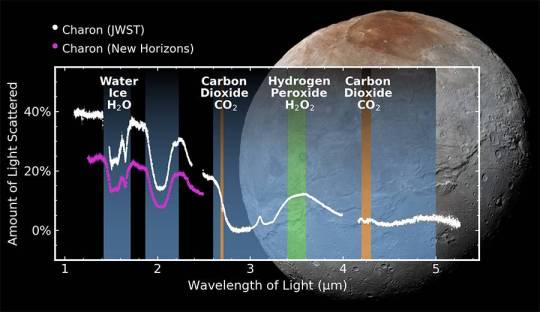
La luna Caronte, la mayor del planeta enano Plutón, ha sido objeto de numerosos estudios desde su descubrimiento en 1978. En 2015, la misión New Horizons ofreció fotografías de su superficie e información relevante sobre su composición, como la presencia de agua helada, amoniaco y compuestos orgánicos. Una de sus limitaciones fue operar en longitudes de onda inferiores a 2,5 µm o micras, lo que dejaba lagunas para registrar algunos componentes. Pero ahora, el telescopio espacial James Webb (JWST) ha llegado hasta los 5,2 µm, revelando dos nuevas moléculas: el dióxido de carbono (CO2) y el peróxido de hidrógeno o agua oxigenada (H2O2). El hallazgo se publica en la revista Nature Communications. Moléculas detectadas en Caronte por la misión New Horizons y el telescopio James Webb. / Silvia Protopapa (SwRI), Ian Wong (STScl) Detectar estos compuestos es importante para estudiar el origen de los cuerpos helados del cinturón de Kuiper, como Plutón y otros planetas enanos Según los autores, detectar estos compuestos es importante para estudiar el origen y evolución de los cuerpos helados del cinturón de Kuiper –situado más allá de Neptuno y donde se localizan planetas enanos como Plutón–, además de los efectos de la irradiación y la fotólisis (descomposición de moléculas en presencia de luz) en sus superficies. “A diferencia de muchos de los objetos más grandes del cinturón de Kuiper, la superficie de Caronte no está oscurecida por hielos altamente volátiles como el metano y, por lo tanto, proporciona información valiosa sobre cómo procesos como la exposición a la luz solar y la 'craterización' afectan a estos cuerpos distantes”, apunta la autora principal Silvia Protopapa, del Instituto de Investigación del Suroeste (SwRI) en Estados Unidos. Espectrógrafo, modelos y experimentos Los investigadores han utilizado el espectrógrafo de infrarrojo cercano (NIRSpec) del Webb para obtener datos en cuatro observaciones a diferentes longitudes de onda. Con esa información, junto a diversos modelos y experimentos de laboratorio, pudieron confirmar la presencia del cristalino hielo de agua y el amoníaco. También identificar el CO2 y H2O2, “aunque las mediciones no aportaron nuevos datos sobre la naturaleza de los compuestos orgánicos de Caronte”, aclara Protopapa a SINC. Imagen de Plutón (P) y Caronte (C) vistos por el instrumento NIRSpec del Webb. / NASA/ESA/CSA/STScI/Silvia Protopapa (SwRI) El estudio sugiere que el CO2, probablemente, proceda de depósitos subsuperficiales del interior de Caronte que han quedado expuestos a través de cráteres de impactos, como los que se ven asociados a llamados “mantos brillantes de material eyectado”. “Estos mantos, visibles en las imágenes obtenidas por la misión New Horizons, son formaciones geológicas caracterizadas por capas de material expulsado y depositado alrededor de cráteres formados por impactos. Estos dejan al descubierto materiales subterráneos, lo que permite comprender mejor la composición del subsuelo lunar”, explica Protopapa. Fina capa de CO2 sobre el hielo “En Caronte, el dióxido de carbono aparece principalmente como una fina capa sobre una subsuperficie rica en hielo de agua –añade–, y nuestra interpretación preferida es que la capa superior de CO2 se originó en el interior y quedó expuesta en la superficie a través de eventos de craterización, como los que crearon esos brillantes mantos de material eyectado”. La investigadora también recuerda que el dióxido de carbono está presente en regiones del disco protoplanetario a partir del cual se formó el sistema de Plutón. Nuestra interpretación preferida es que la capa superior de CO2 se originó en el interior y quedó expuesta en la superficie a través de eventos de craterización Silvia Protopapa (SwRI) Agua oxigenada por irradiación del hielo En cuanto a la presencia de agua oxigenada en la superficie de la luna, esto indica claramente que el suelo rico en agua congelada está alterado por la luz ultravioleta solar y las partículas energéticas del viento solar y los rayos cósmicos galácticos, lo que favorece la producción de esta molécula. El H2O2 se forma a partir de átomos de oxígeno e hidrógeno procedentes de la ruptura del agua helada por partículas energéticas solares y de rayos cósmicos El peróxido de hidrógeno se forma a partir de átomos de oxígeno e hidrógeno procedentes de la ruptura del agua helada debido a la entrada de iones, electrones o fotones. En conjunto, esta investigación y la detección de CO2 y H2O2 en Caronte representa un paso adelante en la ciencia planetaria, según los autores. No solo ofrece información sobre la química de la superficie de la luna, también puede sentar las bases para futuros estudios que exploren la dinámica de los cuerpos del sistema solar exterior, la composición de su superficie y los efectos de la radiación solar. Protopapa resume la novedad del trabajo: “Nuestra investigación revela que la superficie de Caronte conserva evidencias de su formación por la presencia de dióxido de carbono, así como signos de procesos de irradiación, indicados por la presencia de peróxido de hidrógeno”. Derechos: Creative Commons. source Read the full article
0 notes
Text
Milestones in Space Exploration: LISA and EnVision Clear Another Hurdle - Technology Org
New Post has been published on https://thedigitalinsider.com/milestones-in-space-exploration-lisa-and-envision-clear-another-hurdle-technology-org/
Milestones in Space Exploration: LISA and EnVision Clear Another Hurdle - Technology Org
On 25 January 2024, the L-class Laser Interferometer Space Antenna (LISA) flagship mission and the M-class EnVision mission cleared another important hurdle in the European Space Agency’s (ESA) Science Programme.
Venus is Earth’s inner neighbouring planet. It orbits the Sun at a distance of just over 100 million kilometres. The planet has a dense atmosphere of carbon dioxide, which generates more than 90 times the pressure on the surface than on Earth, which is roughly equivalent to the water pressure at a depth of 900 metres on Earth. At altitudes between around 30 and 60 kilometres, there are layers of haze and clouds of sulphuric acid that make it impossible to see the surface of the planet directly. Investigating the composition and dynamics of Venus’ atmosphere is one of the focal points of ESA’s EnVision mission (artist’s impression). Image credit: ESA/VR2Planets/Damia Bouic
ESA’s Science Programme Committee has formally transferred the LISA observatory for detecting gravitational waves and the EnVision mission to explore Venus into their implementation phases by means of ‘mission adoptions’. This means that the detailed design, construction and, later, the extensive testing of the spacecraft, payloads and ground infrastructure can begin in full.
The German Space Agency at the German Aerospace Center (Deutsches Zentrum für Luft- und Raumfahrt; DLR) is the largest contributor to ESA’s science programme and, therefore, provides significant financial support to the LISA mission and parts of EnVision.
This means that important parts of these two major European space projects are being realised in Germany. DLR in Berlin is significantly involved in one of the main instruments for EnVision. The DLR Institute of Planetary Research is responsible for managing and coordinating the entire VenSpec suite.
The DLR Institute of Optical Sensor Systems is developing and constructing this multispectral camera to search for active volcanoes and map the surface mineralogy.
LISA – Detecting oscillations in spacetime: The LISA observatory will detect low-frequency gravitational waves from space and determine the nature of their sources with great accuracy once it goes into operation at the end of 2035. Gravitational waves — oscillations in space-time — are caused by the rapid acceleration of incredibly massive objects, such as the merging of two stellar-mass or supermassive black holes. The tiny amplitudes of a gravitational wave can only be detected by highly sensitive laser interferometry. In LISA, this laser interferometer is created by three identical probes that form an almost equilateral triangle with sides measuring around 2.5 million kilometres. This will make LISA by far the largest observatory ever built. Image Credit: NASA/JPL-Caltech / NASA / ESA / CXC / STScl / GSFCSVS / S.Barke (CC BY 4.0)
LISA – detecting waves in spacetime
LISA was selected as one of the three major flagship missions in ESA’s Science Programme back in 2017. Since then, intensive work has been carried out on the technical concept and its implementation. The scientific preparations that have been underway since the 1990s, including the extremely complex data processing and analysis, have also been intensively continued by a global consortium of more than 1500 researchers.
ESA, as well as the participating national institutions from various European countries and NASA in the USA and their industrial contractors, will now significantly increase the size of their teams in order to carry out the extensive development work that is still required before the planned launch of the mission in mid-2035.
Once it is operational in space from the end of 2035, LISA will detect low-frequency gravitational waves and accurately determine the nature of their sources. Gravitational waves — oscillations in spacetime — are caused by the rapid acceleration of incredibly massive objects, such as the merging of two stellar-mass or supermassive black holes.
The tiny amplitudes of a gravitational wave can only be detected by highly sensitive laser interferometry. In LISA, this laser interferometer is created by three spacecraft that form an almost equilateral triangle with sides that are approximately 2.5 million kilometres in length. This will make LISA by far the largest observatory ever constructed.
LISA – the largest observatory is being developed and built with a significant German contribution
LISA is being developed and built as part of ESA’s Science Programme with the participation of NASA and with contributions to the payload from more than ten European countries, including Germany. ESA’s industrial prime contractor for the overall mission will be selected in 2025 among a German and a German-Italian industrial consortium – Airbus in Friedrichshafen and OHB in Bremen and Oberpfaffenhofen together with Thales-Alenia in Italy.
A scientific consortium is substantially involved in the development of LISA and is also setting up the mission’s data processing and archiving. The German contribution to the mission is of decisive and mission-critical importance. This extensive contribution to LISA is largely attributable to the leading role of the Max Planck Institute for Gravitational Physics / Albert Einstein Institute (AEI) in Hanover in the development of the Interferometric Detection System (IDS), the components of which are provided by various partners in Europe.
The core of the IDS, developed by the AEI, is the central ‘phase meter’ of the mission alongside the optical system, which is to be supplied by a partner from the UK. There is close cooperation with the Technical University of Denmark (DTU) in Copenhagen. In addition, the institute in Hanover will supply a vital mechanism for the payload in collaboration with Dutch partners.
The AEI is also supporting the mission and ESA with many system design issues, drawing on its extensive experience from the development and operation of the LISA Pathfinder technology demonstrator. This precursor mission successfully tested the key measurement principles for LISA in space from 2015 to 2017.
Together with the German space industry, the AEI also played a leading role in this mission. The entire participation of the AEI in LISA, one of whose personnel is also the scientific lead (Principal Investigator) of the gravitational wave mission, is significantly supported by grants from the German Space Agency at DLR with funds from the Federal Ministry for Economic Affairs and Climate Action (BMWK).
EnVision – a multifaceted mission to Venus
EnVision was selected in June 2021 as the fifth M-class mission in ESA’s Cosmic Vision programme and has now also been approved for implementation. In the course of 2024, the project will select an industrial contractor in Europe so that work on finalising the design and building the spacecraft can begin. EnVision is scheduled for launch in 2031 on an Ariane 6 rocket.
The mission will study Venus from its inner core to its upper atmosphere and provide important new insights into the planet’s evolution, geological activity and climate. EnVision aims to answer many long-standing questions about Venus, in particular how and when Earth’s twin became so inhospitable. DLR in Berlin will help to answer these questions, as both the DLR Institute of Planetary Research and the DLR Institute of Optical Sensor Systems are significantly involved in one of the mission’s four major instruments.
EnVision – DLR to map mineralogy and search for active volcanoes
Even though the atmosphere of Venus, with its clouds of sulphuric acid that are impenetrable to visible light, does not allow a direct view of the planet’s surface, there are still indirect ways of ‘imaging’ it. This is done on the one hand with radar, which penetrates the clouds as it does for aircraft on Earth, and on the other hand, at certain wavelengths, particularly in the near infrared, by observing through what are referred to as ‘atmospheric windows’.
However, it is not possible to understand the surface of Venus without also understanding the atmosphere. A spectrometer suite consisting of three sub-instruments is being developed for EnVision to achieve this. It is named VenSpec and has the components VenSpec-U for analysing the upper atmosphere, VenSpec-H for measurements in the near-surface atmosphere and the VenSpec-M, being developed by DLR, for measuring the thermal radiation and spectral properties of the surface.
The entire VenSpec suite is being managed and coordinated by the DLR Institute of Planetary Research. By combining the results from all three channels, deeper insights can be gained into the close ‘coupling’ between the surface and the atmosphere of Venus.
For example, VenSpec-M might discover an active volcanic eruption by detecting the hot lava, while VenSpec-H would simultaneously measure how much water vapour the volcano is releasing into the atmosphere and VenSpec-U would record the distribution of sulphur dioxide from the volcanic eruption in the upper atmosphere.
VenSpec-M will not only be able to measure the thermal signature of a hot, active volcano; the instrument will also map the mineralogical composition of the surface globally for the first time.
VenSpec-M is being developed and built under the leadership of the DLR Institute of Optical Sensor Systems, while the DLR Institute of Planetary Research is responsible for the scientific management of the experiment on EnVision. Both institutes are located at the DLR site in Berlin-Adlershof. In addition to DLR, other scientific institutes in Germany are involved in the EnVision mission.
Source: DLR
You can offer your link to a page which is relevant to the topic of this post.
#2024#aerospace#aircraft#albert einstein#Analysis#Astronomy news#atmosphere#berlin#Black holes#Building#caltech#carbon#Carbon dioxide#climate#clouds#Collaboration#Composition#construction#course#data#data processing#Design#detection#development#dynamics#earth#economic#EnVision (ESA mission)#eruption#ESA
0 notes
Text
Coinbase Officially Launches ‘Base’ Blockchain in Major Milestone
http://dlvr.it/StSCLs
0 notes
Photo
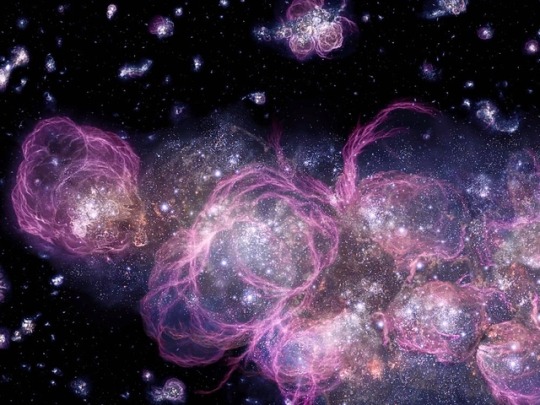
The star-formation in the early Universe. Credit:JPL, STScl via /r/spaceporn http://bit.ly/2VmLc0p
0 notes
Text
0 notes
Text
Exoplanets and their characterization the focus of STScl workshop
Exoplanets and their characterization the focus of STScl workshop
An artist’s rendering of 10 hot Jupiters, exoplanets physically similar to Jupiter that orbit very close to their parent star, studied by Dr. David Sing of the Johns Hopkins University Center for Astrophysical Sciences. Credit: NASA, ESA, and D. Sing The various methods used over the last 25 years to discover exoplanets and the science of categorizing the many types of exoplanets that have been…
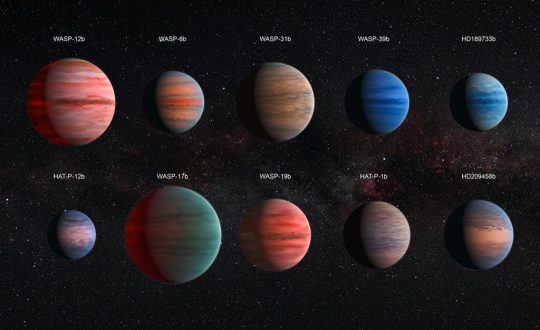
View On WordPress
1 note
·
View note
Text
Mother says she was banned from volunteering at son's school over OnlyFans page
Scientists track an asteroid that has a chance of hitting the Earth while experts have uncovered a mysterious portrait under a Picasso painting. (Souce: CNN, NASA, ESA, CSA, STSCL, ATG, ATLAS, NORTHROP GRUMMAN, GETTY, ADRIANA M. GUTIERREZ, THE COURTAULD INSTITUTE OF ART)
0 notes
Text
NASA's Hubble Captures a Pair of Interacting Galaxies Forming the Number '10' in Space
NASA’s Hubble Captures a Pair of Interacting Galaxies Forming the Number ’10’ in Space
In its more than 30 years of service, NASA’s Hubble Space Telescope has made over 1.3 million observations of intriguing cosmic events and bodies. It once captured a pair of gravitationally interacting galaxies called Arp 147, using its prime working camera – the Wide Field Planetary Camera 2 (WFPC2). The “Hubble Classic” image has been again shared on Instagram. The image shows the two galaxies…
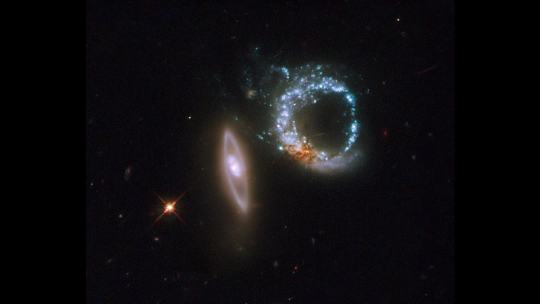
View On WordPress
#arp 147 hubble space telescope pair interacting galaxies esa stscl hubble space telescope#interacting galaxies#nasa
0 notes